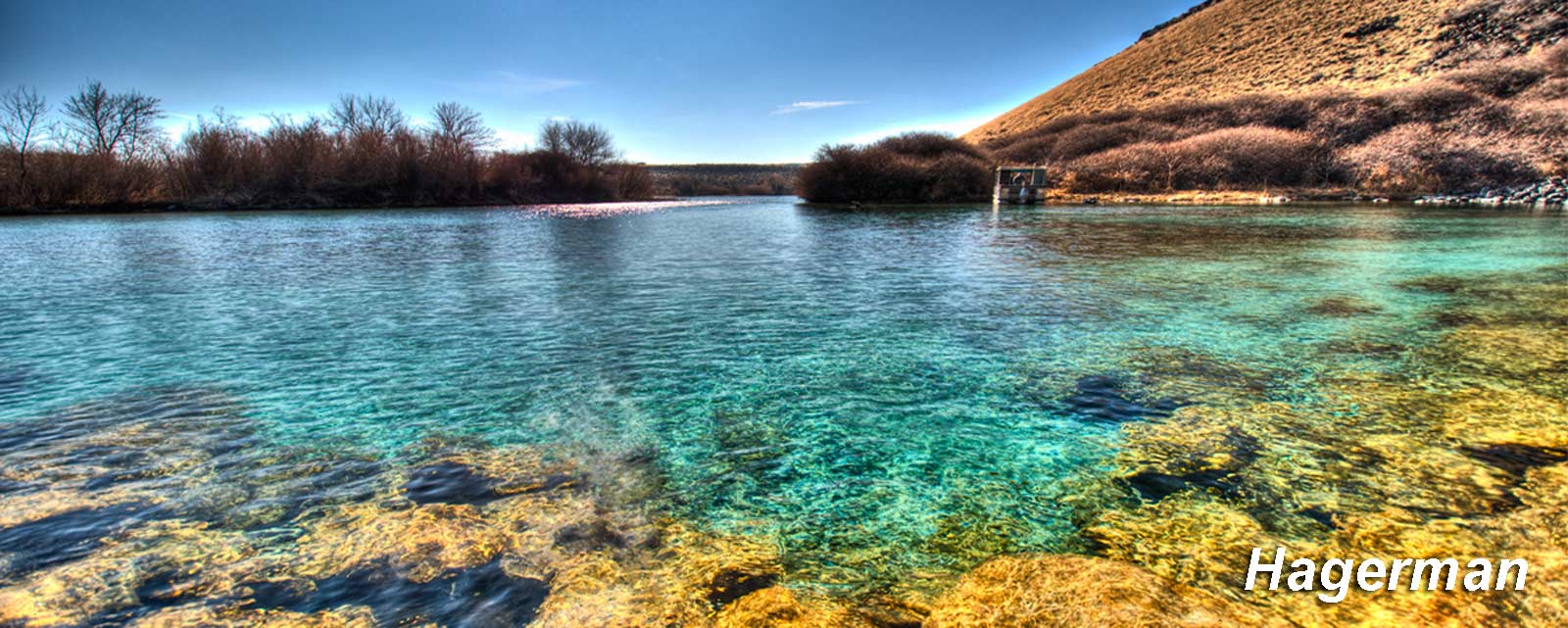HAGERMAN
Hagerman is a town in Gooding County, Idaho, United States. The population was 872 at the 2010 census, up from 656 in 2000. The area is noted for its fossil beds and the Thousand Springs of the Eastern Snake Plain Aquifer. Hagerman is home to a national fish hatchery, a university research station, and extensive aquaculture, assisted by an abundance of geothermal water for temperature regulation.
As of the census of 2010, there were 872 people, 380 households, and 231 families residing in the city. The population density was 1,503.4 inhabitants per square mile (580.5/km2). The racial makeup of the city was 93.8% White, 0.1% African American, 0.7% Native American, 0.3% Asian, 3.4% from other races, and 1.6% from two or more races. Hispanic or Latino of any race were 13.8% of the population.
There were 380 households of which 26.8% had children under the age of 18 living with them, 45.0% were married couples living together, 10.3% had a female householder with no husband present, 5.5% had a male householder with no wife present, and 39.2% were non-families. The median age in the city was 46.1 years. 24.4% of residents were under the age of 18; 5.9% were between the ages of 18 and 24; 18.9% were from 25 to 44; 25.3% were from 45 to 64; and 25.2% were 65 years of age or older. The gender makeup of the city was 48.3% male and 51.7% female.
Hagerman is the home of the Hagerman Fossil Beds National Monument of the U. S. National Park Service. No other fossil beds preserve such varied land and aquatic species from the Pliocene. More than 180 animal species of both vertebrates and invertebrates and 35 plant species have been found in hundreds of individual fossil sites. The Hagerman Horse Quarry fossil beds have produced 20 complete skeletons and a number of partial skeletons of this zebra-like ancestor of today’s horse.
The Hagerman Valley was formed 15,000 years ago by the Bonneville flood which gouged out canyons, moved house-sized boulders and left enormous sand bars. The Valley's unique landscape is dotted with innumerable, rounded, "rock melons", some the size of an automobile. The volcanic lava flows, deep box canyons, fossil beds, mine diggings and vast rock formations tell the story of days gone by. Hot springs produce warm water that can soothe your aching muscles and cold springs gush water a perfect temperature for raising trout.
Here you will see the canyon of the mighty Pohogawa, the River of the Sage Plain, as the Indians called the Snake River. You can experience its rapids, whirlpools, waterfalls and associated wildlife. It is a land of melon farming, water-fowl and deer hunting and fishing for trout.
"The Valley of the Thousand Springs" is one of those rare natural rest stops that has been serving travellers for hundreds, perhaps thousands of years. The mild, almost snowless winters, hot springs and natural fisheries provided by the clear flow of springs at a constant 58 degrees made the valley a favorite Indian wintering area.
